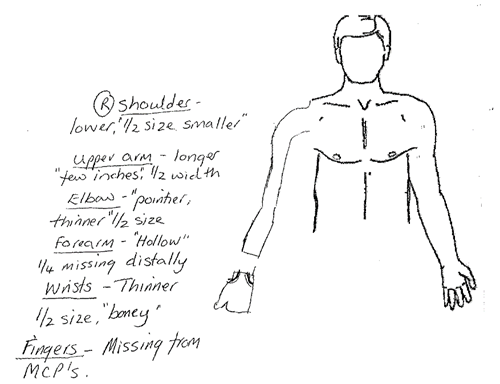Home » Assessment
If you notice these features, then this indicates that your patient may have abnormal limb perception (“body perception abnormalities”)/ or neglect:
However some patients do not show these features, therefore, in all cases ask your patient:
“How do you feel about your limb?”. Encourage the patient to say whatever they feel, explain to them that whatever they say is fine, however strange it may sound. Patients often perceive these body perception abnormalities as difficult to understand and sometimes they may fear that they are going “mad”.
For example a patient may feel that their limb or parts of it is altered in size or shape, or disconnected (body perception problems), or they may feel strongly emotional about their limb or want it removed (neglect problems).
Various Scales can be used to assess and quantify these symptoms, the references for a few can be found below
https://www.ncbi.nlm.nih.gov/pubmed/16730904
https://www.ncbi.nlm.nih.gov/pubmed/23562169
https://www.ncbi.nlm.nih.gov/pubmed/22407949
Sample assessment procedure for body perception
Upper limb example:
Compare with the affected side encouraging the patient to recognise what feels normal and what is altered.
Some patients feel happier drawing their body and how it feels to them. This is a patient example:

Their are several treatments that can help to normalise body perception abnormalities and neglect. These treatments aim to support patients to perceive the limb in a more normal manner utilising senses of vision & touch. These treatments are thought to address and correct/ normalise central representation.